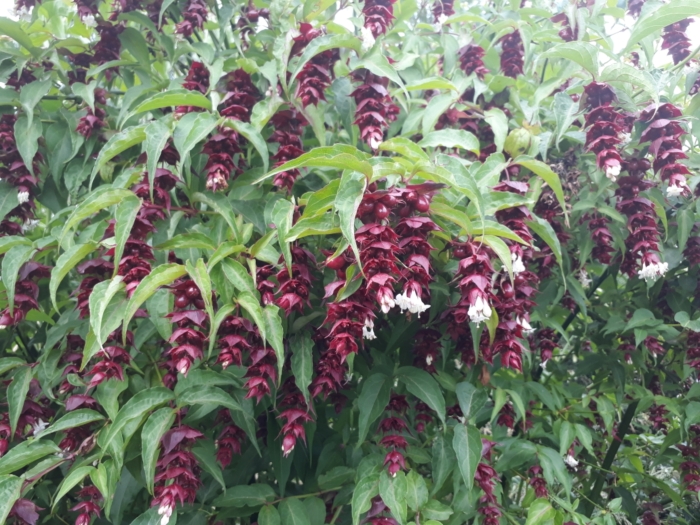Pheasant Berry
(Leycesteria formosa)
Pheasant Berry (Leycesteria formosa)
/
/

John Barkla
CC BY 4.0





















































Estimated Native Range
Summary
Pheasant Berry is valued for its ornamental features, including its attractive flowers and berries, which provide visual interest and wildlife forage. It is used in mixed borders, as a specimen plant, or for naturalistic plantings. The plant is adaptable to a range of conditions, preferring moist but well-drained soils and tolerating full sun to partial shade. It can be pruned back hard if necessary. Leycesteria formosa is known for its resistance to atmospheric pollution, making it suitable for urban gardens. It is also tolerant of windy sites and coastal conditions. However, it can be potentially invasive outside its native range, so gardeners should check local guidelines before planting.CC BY-SA 4.0
Plant Description
- Plant Type: Shrub
- Height: 3-6 feet
- Width: 3-5 feet
- Growth Rate: Moderate
- Flower Color: White, Purple
- Flowering Season: Summer, Fall
- Leaf Retention: Deciduous
Growth Requirements
- Sun: Full Sun, Part Shade
- Water: Medium
- Drainage: Slow, Medium, Fast
Common Uses
Bee Garden, Bird Garden, Deer Resistant, Drought Tolerant, Edible*Disclaimer: Easyscape's listed plant edibility is for informational use. Always verify the safety and proper identification of any plant before consumption., Fragrant, Hedges, Hummingbird Garden, Low Maintenance, Salt Tolerant, Street Planting
Natural Habitat
Native to the Himalayas and southwestern China, thriving in forest margins, scrublands, and clearings
Other Names
Common Names: Himalayan Honeysuckle, Pheasant-Berry, Himalaya-Honeysuckle, Schöne Leycesterie, Arbre À Faison, Axtry
Scientific Names: , Leycesteria formosa, Leycesteria formosa var. stenosepala, Leycesteria formosa var. brachysepala, Leycesteria formosa var. formosa, Leycesteria formosa var. glandulosissima, Leycesteria limprichtii, Hamelia connata,
GBIF Accepted Name: Leycesteria formosa Wall.